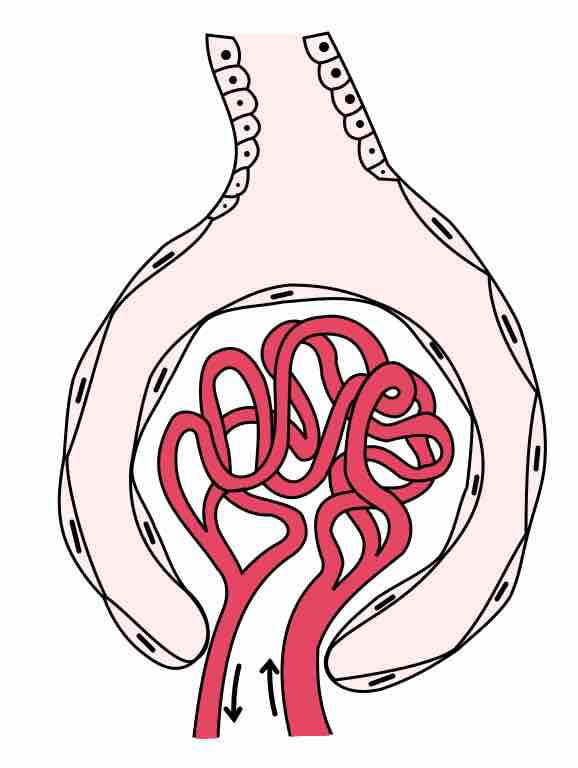Glomerular filtration is the first step in urine formation and constitutes the basic physiologic function of the kidneys. It describes the process of blood filtration in the kidney, in which fluid, ions, glucose, and waste products are removed from the glomerular capillaries.
Many of these materials are reabsorbed by the body as the fluid travels through the various parts of the nephron, but those that are not reabsorbed leave the body in the form of urine.
Glomerulus Structure
Blood plasma enters the afferent arteriole and flows into the glomerulus, a cluster of intertwined capillaries. The Bowman's capsule (also called the glomerular capsule) surrounds the glomerulus and is composed of visceral (simple squamous epithelial cells—inner) and parietal (simple squamous epithelial cells—outer) layers.
The visceral layer lies just beneath the thickened glomerular basement membrane and is made of podocytes that form small slits in which the fluid passes through into the nephron. The size of the filtration slits restricts the passage of large molecules (such as albumin) and cells (such as red blood cells and platelets) that are the non-filterable components of blood.
These then leave the glomerulus through the efferent arteriole, which becomes capillaries meant for kidney–oxygen exchange and reabsorption before becoming venous circulation. The positively charged podocytes will impede the filtration of negatively charged particles as well (such as albumins).

Glomerulus structure
A diagram showing the afferent and efferent arterioles bringing blood in and out of the Bowman's capsule, a cup-like sac at the beginning of the tubular component of a nephron.
The Mechanisms of Filtration
The process by which glomerular filtration occurs is called renal ultrafiltration. The force of hydrostatic pressure in the glomerulus (the force of pressure exerted from the pressure of the blood vessel itself) is the driving force that pushes filtrate out of the capillaries and into the slits in the nephron.
Osmotic pressure (the pulling force exerted by the albumins) works against the greater force of hydrostatic pressure, and the difference between the two determines the effective pressure of the glomerulus that determines the force by which molecules are filtered. These factors will influence the glomeruluar filtration rate, along with a few other factors.